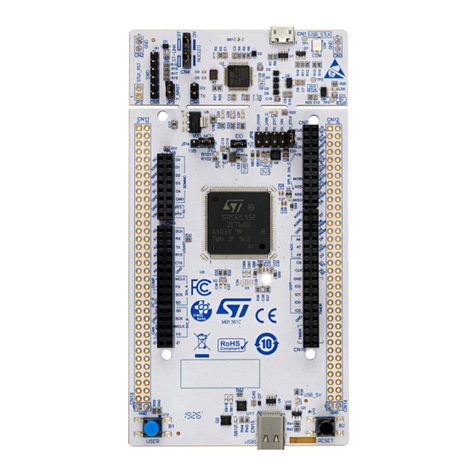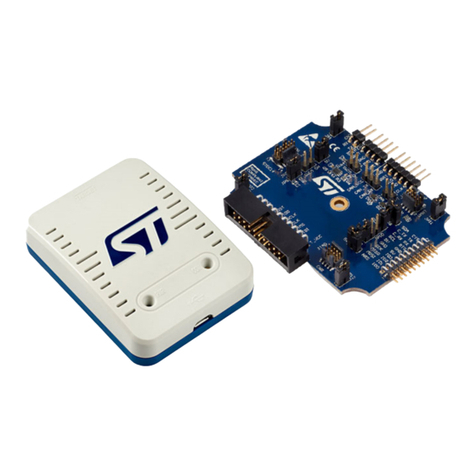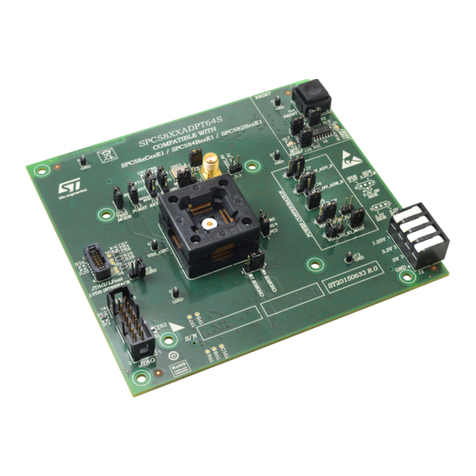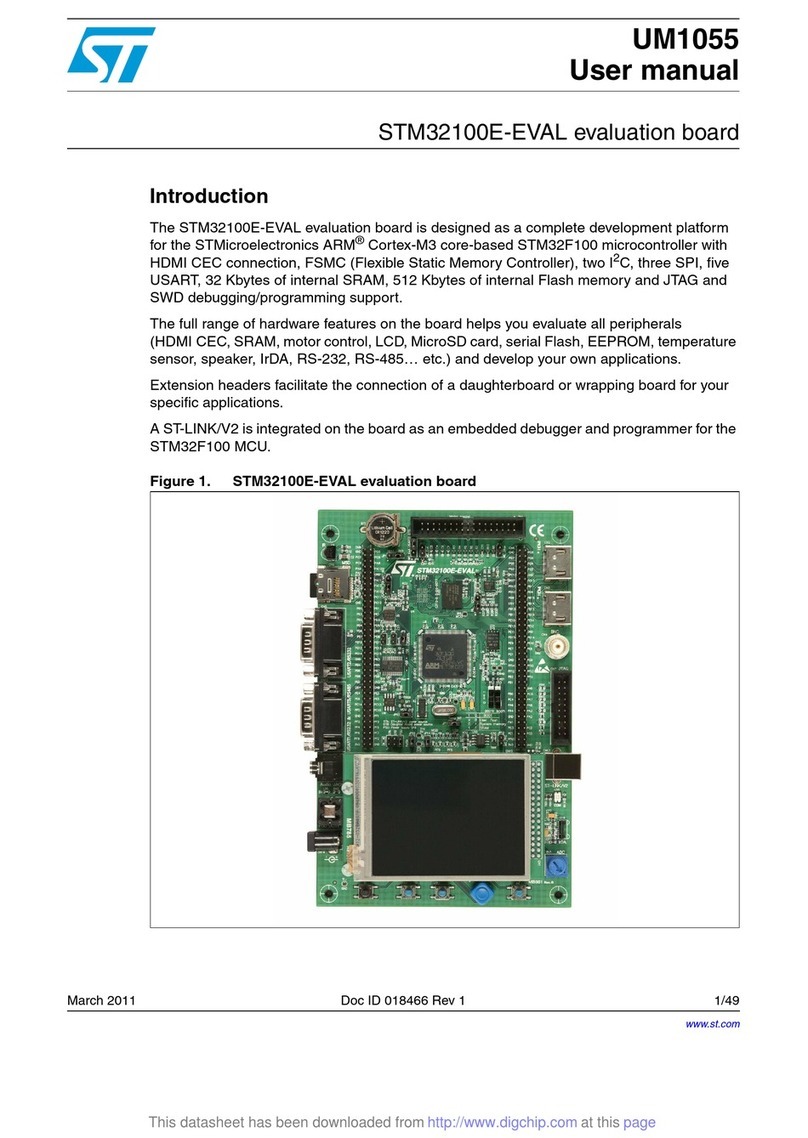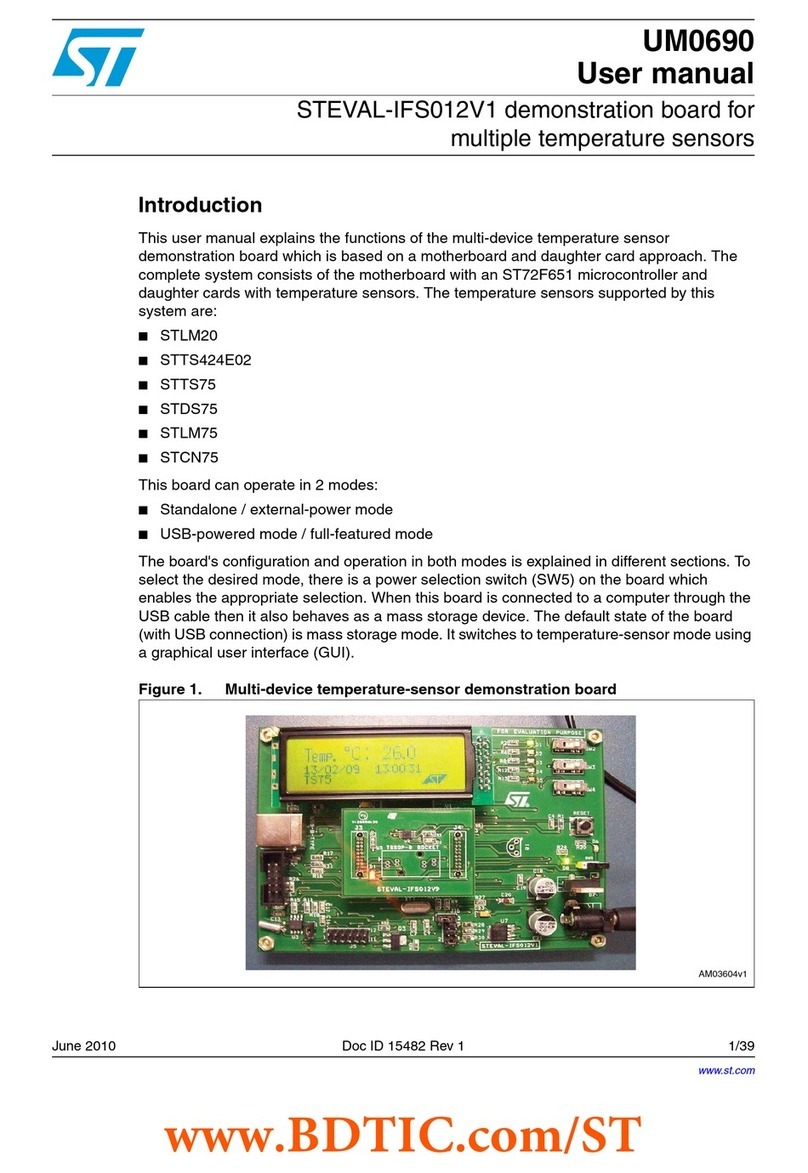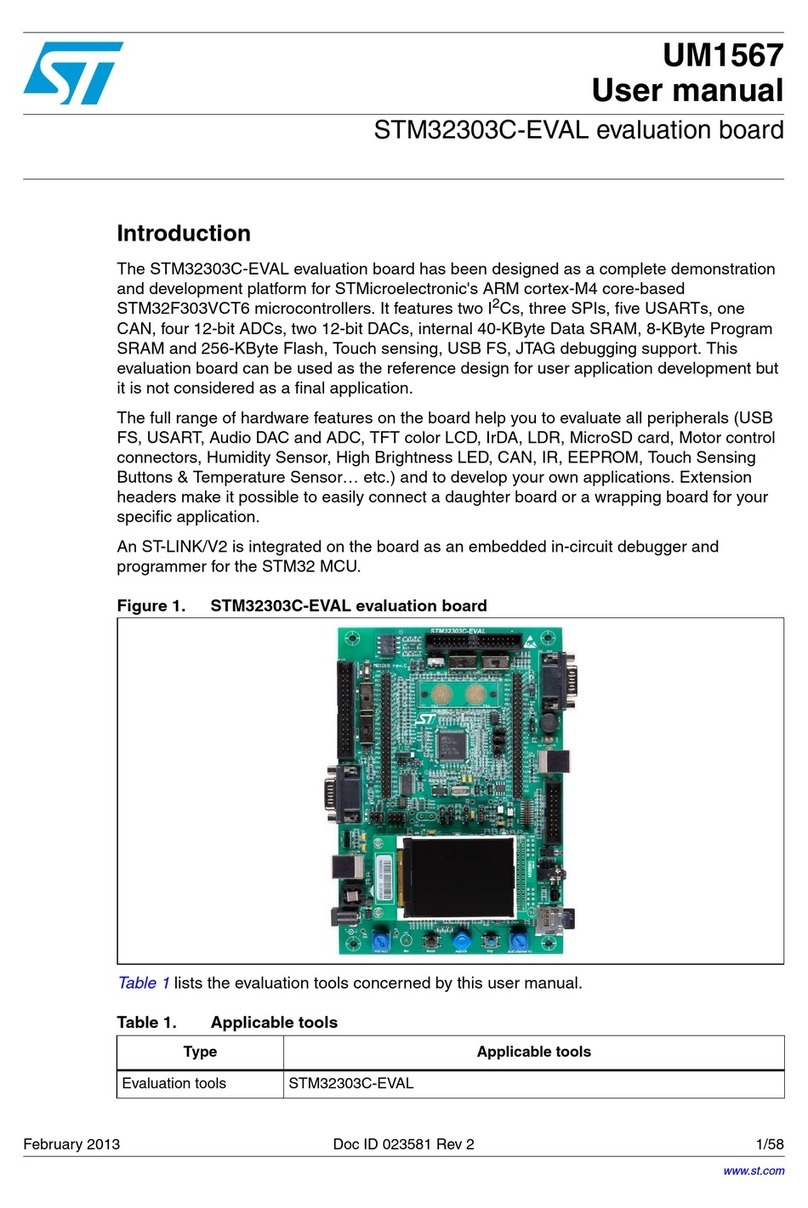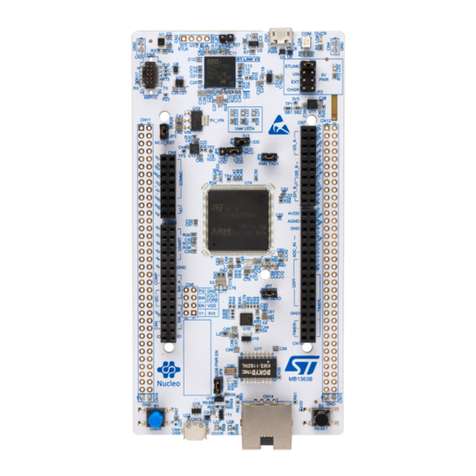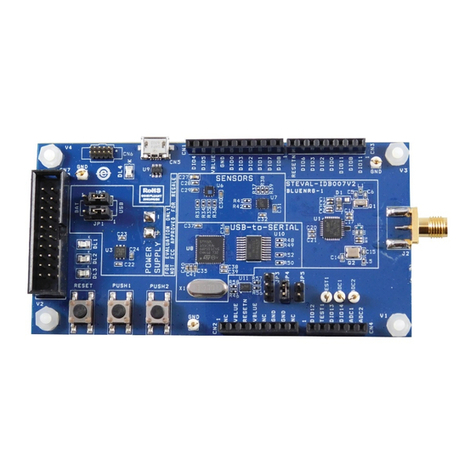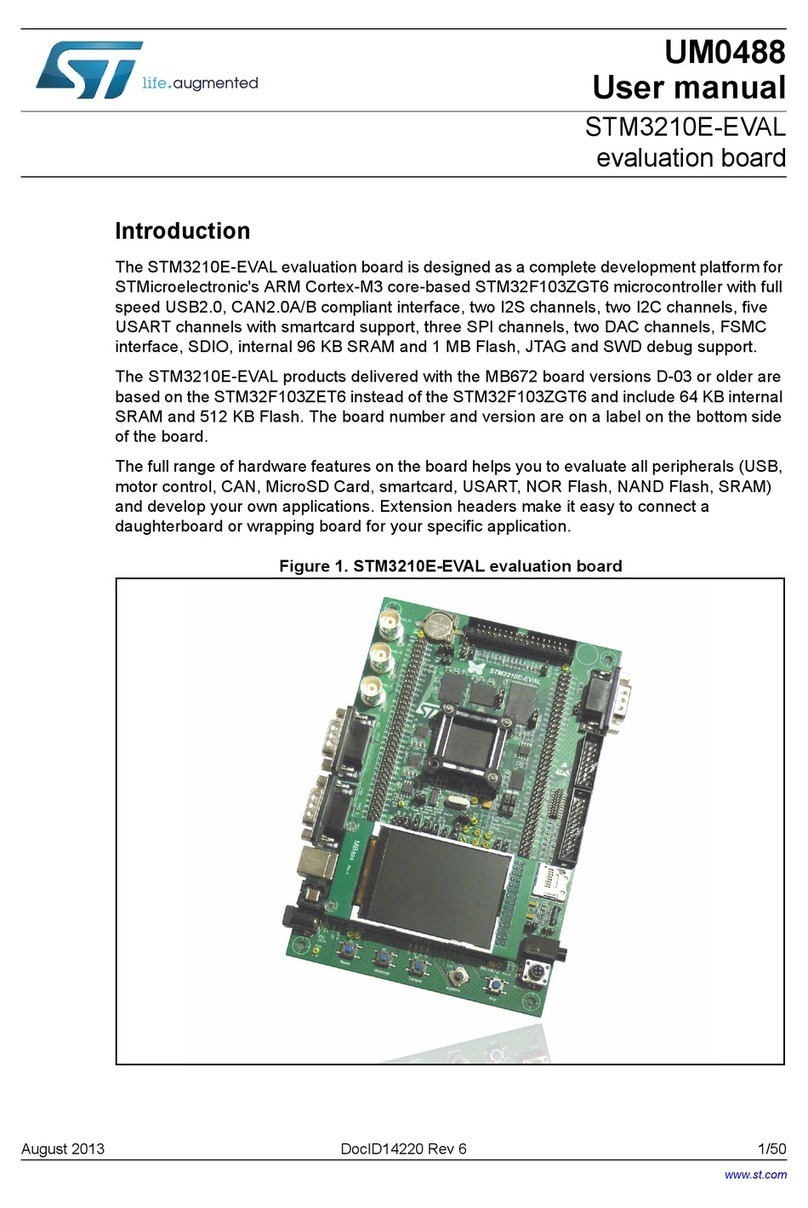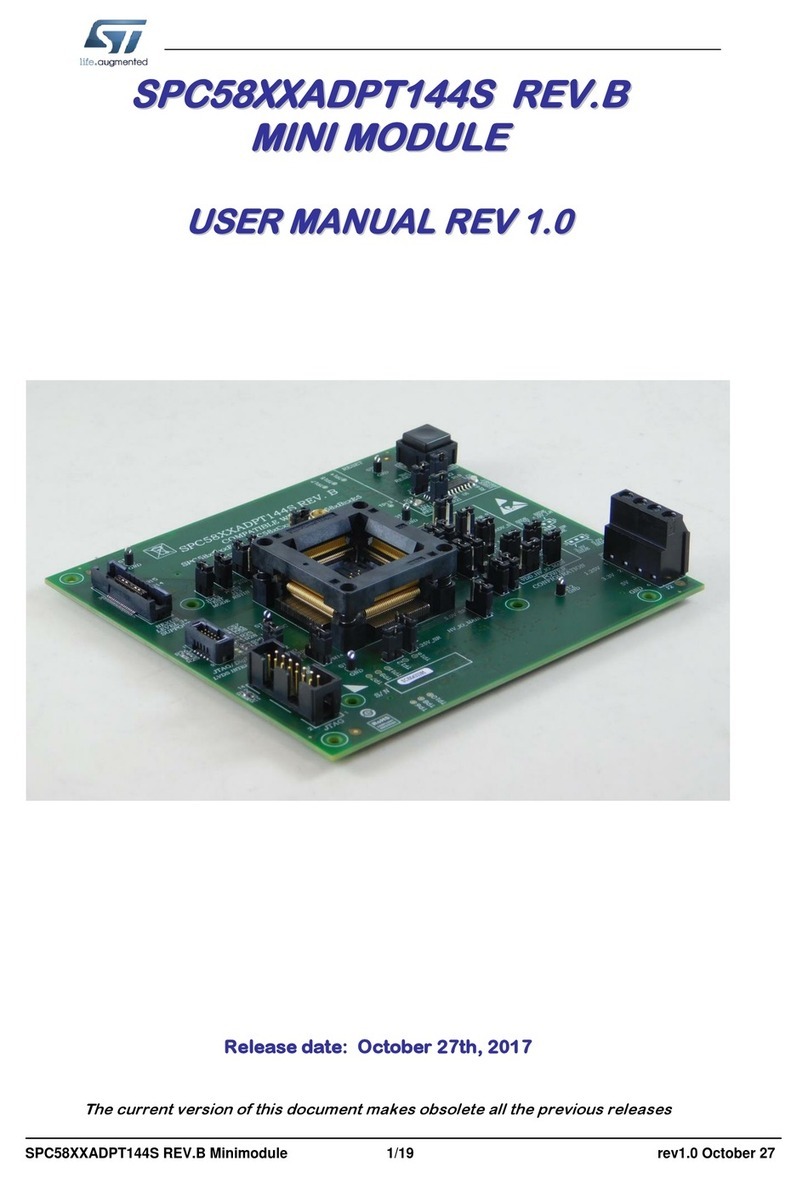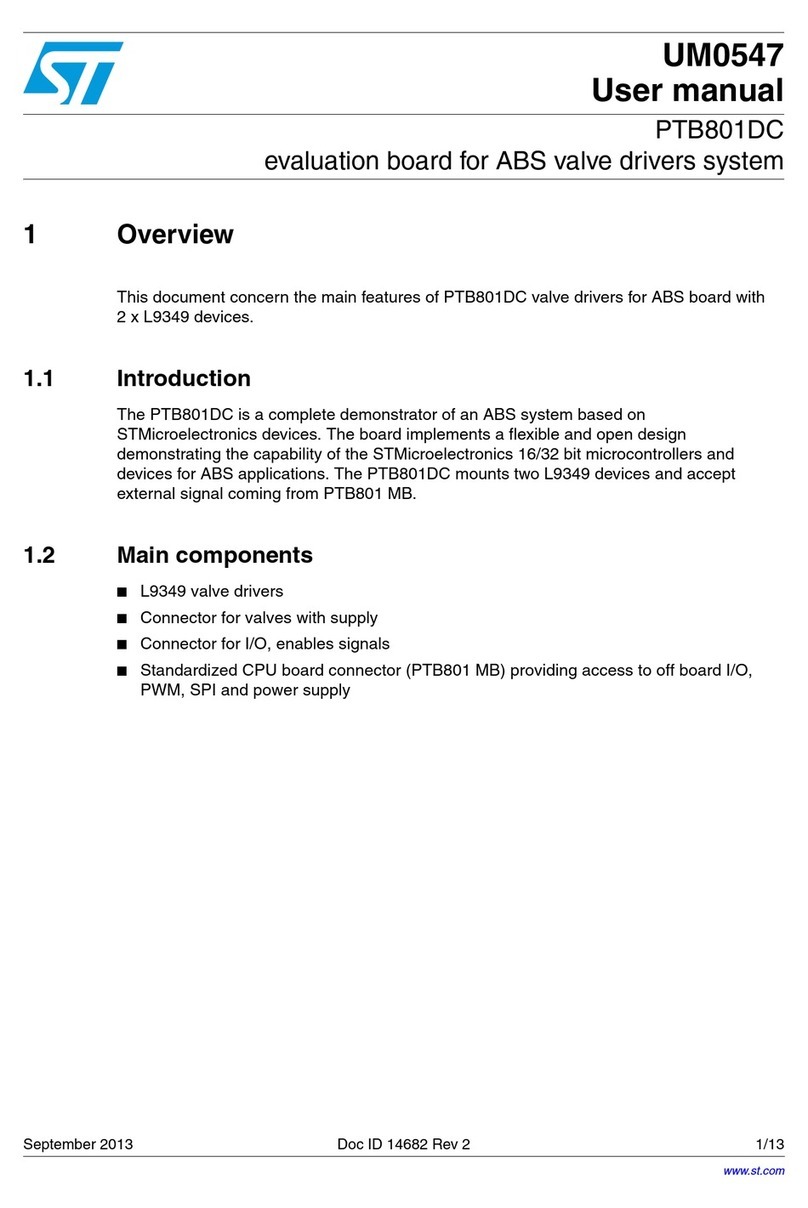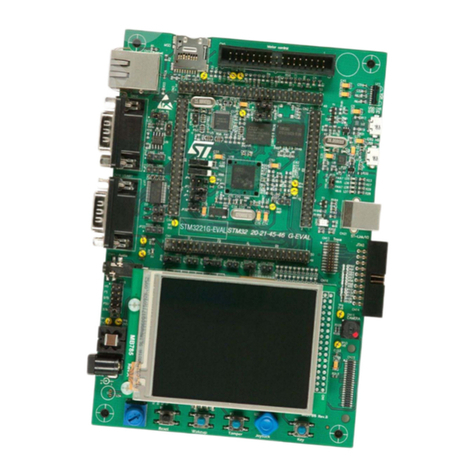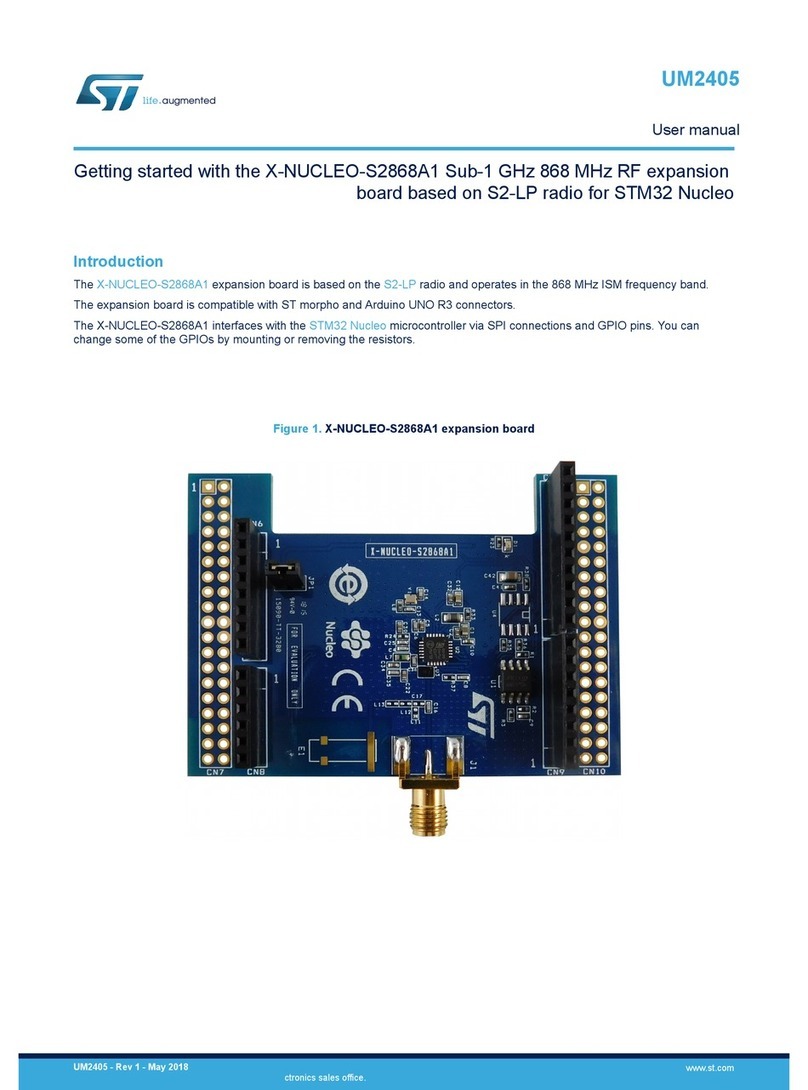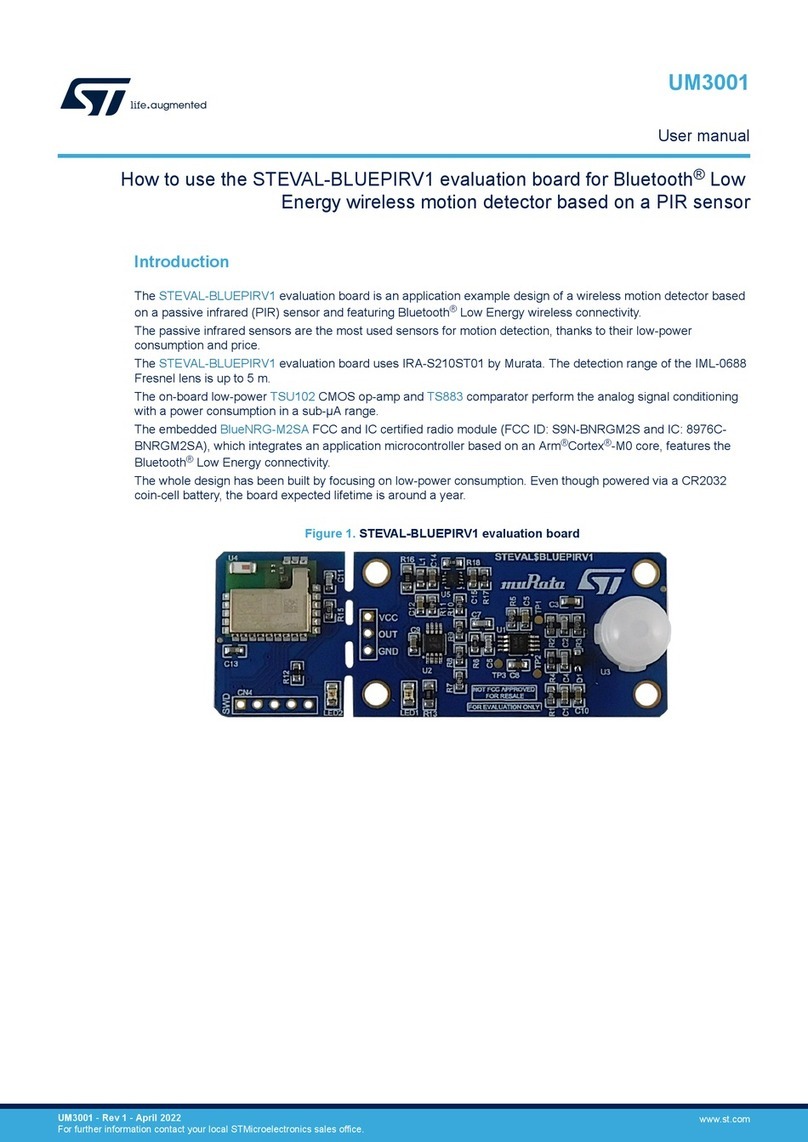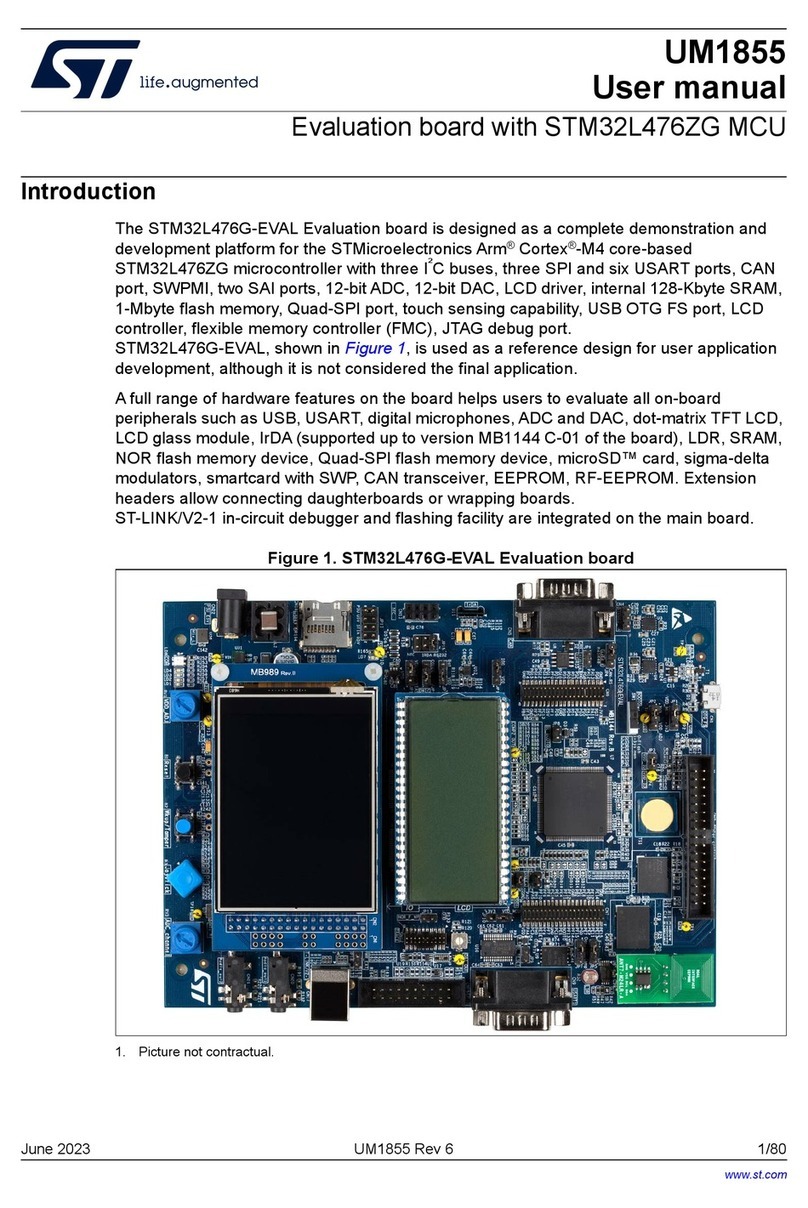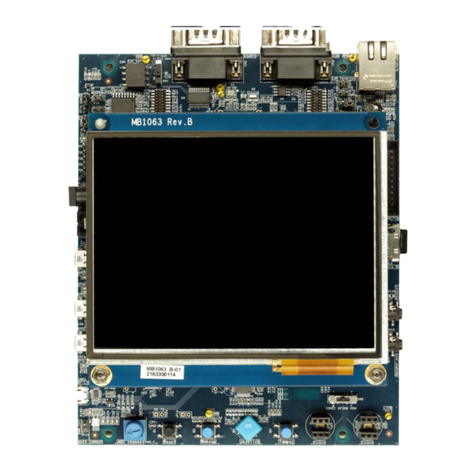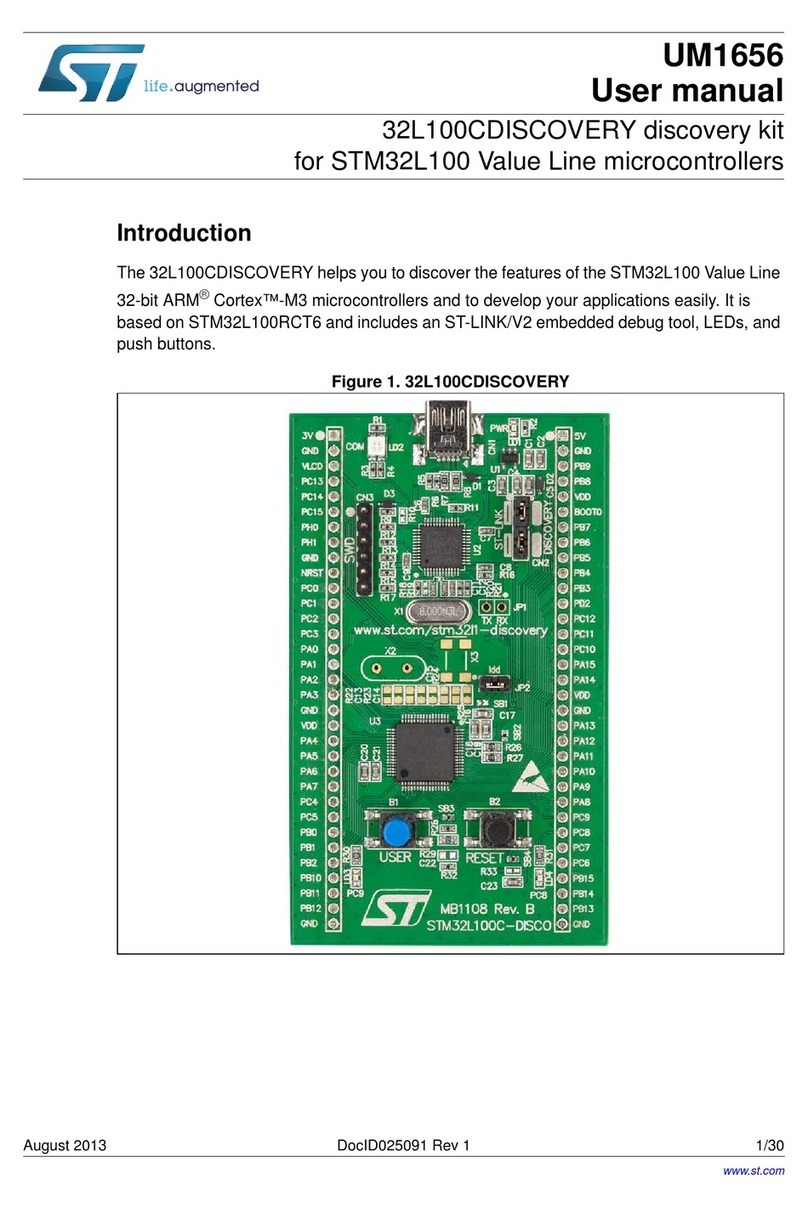
UM0430 Contents
3/48
7.4.8 "3 Phase PMAC motor (sinewave)" settings . . . . . . . . . . . . . . . . . . . . . 29
7.4.9 "3 Phase PMAC Motor (sinewave)" advanced settings . . . . . . . . . . . . . 31
7.4.10 Changing the maximum current allowed by GUI . . . . . . . . . . . . . . . . . . 32
7.4.11 Compiling the firmware . . . . . . . . . . . . . . . . . . . . . . . . . . . . . . . . . . . . . 32
7.4.12 Programming the firmware . . . . . . . . . . . . . . . . . . . . . . . . . . . . . . . . . . 33
7.4.13 Setup option byte . . . . . . . . . . . . . . . . . . . . . . . . . . . . . . . . . . . . . . . . . . 34
7.4.14 Jumper setting table . . . . . . . . . . . . . . . . . . . . . . . . . . . . . . . . . . . . . . . . 35
7.4.15 Board connection . . . . . . . . . . . . . . . . . . . . . . . . . . . . . . . . . . . . . . . . . . 35
7.5 Driving the AC induction motor . . . . . . . . . . . . . . . . . . . . . . . . . . . . . . . . . 36
7.5.1 Specific connection (sensor) . . . . . . . . . . . . . . . . . . . . . . . . . . . . . . . . . 36
7.5.2 Specific jumper settings . . . . . . . . . . . . . . . . . . . . . . . . . . . . . . . . . . . . . 37
7.5.3 LED behavior after power on . . . . . . . . . . . . . . . . . . . . . . . . . . . . . . . . . 37
7.5.4 Setting of potentiometer . . . . . . . . . . . . . . . . . . . . . . . . . . . . . . . . . . . . . 37
7.5.5 Run the motor (LED behavior) . . . . . . . . . . . . . . . . . . . . . . . . . . . . . . . . 37
7.5.6 Changing real-time parameters . . . . . . . . . . . . . . . . . . . . . . . . . . . . . . . 37
7.5.7 Stop the motor (LED behavior) . . . . . . . . . . . . . . . . . . . . . . . . . . . . . . . 38
7.6 Driving the BLDC Motor (trapezoidal - sensorless) . . . . . . . . . . . . . . . . . 38
7.6.1 Specific connection (sensor) . . . . . . . . . . . . . . . . . . . . . . . . . . . . . . . . . 38
7.6.2 Specific jumper settings . . . . . . . . . . . . . . . . . . . . . . . . . . . . . . . . . . . . . 38
7.6.3 LED behavior after power on . . . . . . . . . . . . . . . . . . . . . . . . . . . . . . . . . 39
7.6.4 Setting of potentiometer . . . . . . . . . . . . . . . . . . . . . . . . . . . . . . . . . . . . . 39
7.6.5 Running the motor (LED behavior) . . . . . . . . . . . . . . . . . . . . . . . . . . . . 39
7.6.6 Changing real-time parameters . . . . . . . . . . . . . . . . . . . . . . . . . . . . . . . 39
7.6.7 Stopping the motor (LED behavior) . . . . . . . . . . . . . . . . . . . . . . . . . . . . 40
7.7 Driving the BLDC Motor (trapezoidal - sensored) . . . . . . . . . . . . . . . . . . 40
7.7.1 Specific connection (sensor) . . . . . . . . . . . . . . . . . . . . . . . . . . . . . . . . . 41
7.7.2 Specific jumper settings . . . . . . . . . . . . . . . . . . . . . . . . . . . . . . . . . . . . . 41
7.7.3 LED behavior after power on . . . . . . . . . . . . . . . . . . . . . . . . . . . . . . . . . 41
7.7.4 Setting of potentiometer . . . . . . . . . . . . . . . . . . . . . . . . . . . . . . . . . . . . . 41
7.7.5 Running the motor (LED behavior) . . . . . . . . . . . . . . . . . . . . . . . . . . . . 41
7.7.6 Changing real-time parameters . . . . . . . . . . . . . . . . . . . . . . . . . . . . . . . 42
7.7.7 Stopping the motor (LED behavior) . . . . . . . . . . . . . . . . . . . . . . . . . . . . 43
7.8 Driving the BLAC motor . . . . . . . . . . . . . . . . . . . . . . . . . . . . . . . . . . . . . . 43
7.8.1 Specific connections (sensor) . . . . . . . . . . . . . . . . . . . . . . . . . . . . . . . . 43
7.8.2 Specific jumper settings . . . . . . . . . . . . . . . . . . . . . . . . . . . . . . . . . . . . . 43
7.8.3 LED behavior after power on . . . . . . . . . . . . . . . . . . . . . . . . . . . . . . . . . 44
7.8.4 Setting of potentiometer . . . . . . . . . . . . . . . . . . . . . . . . . . . . . . . . . . . . . 44
